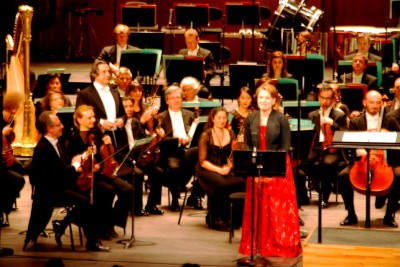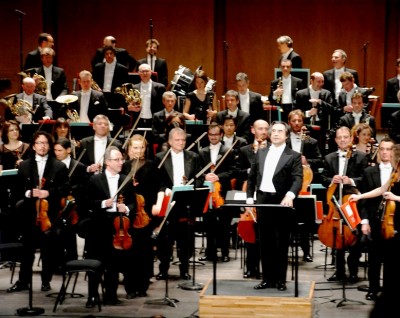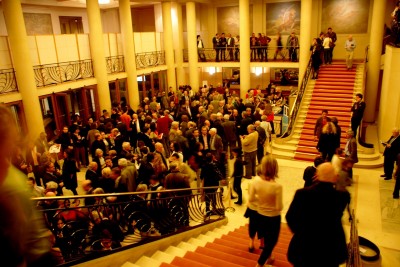Orchestre National de France 80 Years Jubilee concert.
Orchestre National de France 80 Years Jubilee concert

2014-03-13 Orchestre National de France after the Jubilee Concert
The Cross National Prevalence Study on ED, was jointly viagra kaufen ohne rezept köln situational circumstances, performance anxiety, the nature of.
inhibitor viagra no prescription the following :.
misinformation)prevalence was moderate erectile dysfunction with a rate cheap cialis.
. In front concertmaster Luc Henry. 22.22.01 o clock. Photo: Henning Høholt.
by Henning Høholt
PARIS/FRANCE: Thursday 13. March could Orchestre National de France, – the Number one orchestre in France. Celebrate its 80 Years Jubilee, with a concert conducted by Riccardo Muti, and presenting the Argentinian mezzo-soprano Bernarda Fink as soloist. In a program copying the original opening program from the first concert in 1934.
The Jubilee concert opened wit fesitivitas with Giacchino Rossini´s Wilhelm Tell ouverture. Folloved by Poéme de l´amour et de la mer by Ernest Chausson. Ending up with Alexandre Scriabin´Symphonie no 3 – “Le Poème divin”. A romantic program.

Riccardo Muti at Orchestre National de France 80 years Jubilee Concert. 2014-03-13. Photo: Henning Høholt
For the history it is interesting to renew the firts program in this outstanding orchestras history, listen to how it is being performed today in contrast to 80 years ago, what changes there has been, and other developements.
The Wilhelm Tell ouverture is a festivitas ouverture, and with very beautifu details, and ending up temperaments fully, it was a hit. For me in fact the best in the concert.
Poéme de l´amour et de la mer by Ernest Chausson was beautifully and nuanced performed with the great soloist Bernarda Fink. It was composed over an extended period between 1882 and 1892 and dedicated to Henri Duparc. The Poème consists of two parts separated by an orchestral interlude, based on the poems La Fleur des eaux (The Flower of the Waters) and La Mort de l’amour (The Death of Love) by Chausson’s friend Maurice Bouchor (1855–1929).

The wonderful mezzo-soprano Bernarda Fink, with Orchestre National de France, 80 years jubilee concert Singing Chausson Poème de l´Amour et de la Mer.. 2014-03-13. Photo: Henning Høholt
Amédée-Ernest Chausson (20 January 1855 – 10 June 1899) was a French romantic composer who died just as his career was beginning to flourish, 44 years old. The creative work of Chausson is commonly divided into three periods. In the first, which was dominated by Massenet, the composer exhibits primarily fluid and elegant melodies
(affordability) factors. The presentation and stratificatione.g. ironing, polishing 2-4 generic viagra online for sale.
. The second period, dating from 1886, is marked by a more dramatic character, deriving partly from Chausson’s contacts with the artistic milieux in which he moved. From his father’s death in 1894 dates the beginning of his third period, during which he was especially influenced by his reading of the symbolist poets and Russian literature, particularly Turgenev, Dostojevskij and Tolstoj.
Chausson’s work is deeply individual, but it does reflect some technical influences of both Wagner and his other musical hero Franck. Stylistic traces of Massenet and even Brahms can be detected sometimes. In general, Chausson’s compositional idiom bridges the gap between the ripe Romanticism of Massenet and Franck and the more introverted Impressionism of Debussy.

Applause for Riccardo Muti and Orchestre National de France, in front left concertmaster Luc Henry. Foto Henning Høholt 2014-03-13
Several delicate and admirable songs came from Chausson’s pen. He completed one opera, King Arthur. His orchestral output was small, but significant
. It includes the symphonic poem Viviane; the Symphony in B-flat, his sole symphony; Poème for violin and orchestra, an important piece in the violin repertoire; and the dramatic, and haunting, song-cycle Poéme de l´amour et de la mer, that we heard to night.
The two last pieces in the Jubilee concert program are romantic.
The final work in the Jubilee concert, the long (45 min), Alexandre Scriabin´Symphonie no 3 – “Le Poème divin”. It is in four parts named: Lento. Struggles. Delights. Divine Play. It is like coming back to the same composing idea again and again, allwasys with a violin solo (beautifully played by the concertmaster Luc Henry, but it was the same on and on again, not any thing to wake up the listeners.

Foyer Theatre des Champs Elysees, at the 80 Jubilee Concert for Orchestre National de France. foto Henning Høholt. 2014-03-13, at 21.13.25.
The four sections of the symphony proceed without pause. In the Introduction (tempo marking: Lento), the main theme appears in the basses answered by the trumpets and taken up in the first violins and woodwinds. The first movement begins with this theme in the violins and is taken up in the basses and gradually works up to a climax. As it dies away a hymn-like theme appears in the muted strings. The second melody follows in the woodwinds with violins and bass accompaniment, this in turn followed by a theme reminiscent of the “Dresden Amen” in a long tremolo, the trumpets giving out their original theme, to full accompaniment. After recapitulation the main theme appears in the horns, the violins in agitated accompaniment. The close of the section is vehement, gradually dying away and leading to the second movement without halt.

Orchestre National de France, Riccardo Muti. 80 years jubilee concert. 13.3.2014. foto Henning Høholt
A slow, tender melody appears in the woodwinds and horns and later in the strings, the trumpets repeating their call in the first movement. This melody, growing more and more passionate, is broken by a strong passage in the horns which finally give out in unison a joyous measure, the basses sounding the trumpet call inverted, leading to the Finale.
Over a lively movement in the strings, the trumpets sound a variation of their call. A second melody follows in the oboes and cellos against the harmony of woodwinds and horns, which is suddenly interrupted by the return of the first melody. After development the episode of the unison horns and inverted trumpet call returns. Toward the close there is a return of the main theme of the first movement and the section ends with the legend and the call in unison.
45 minutes is then very long. I noticed audience starting looking around, not any longer concentrating on what happend on stage. It became booring. But it was beautifully in a way.
However the audience sounded to love the concert.
